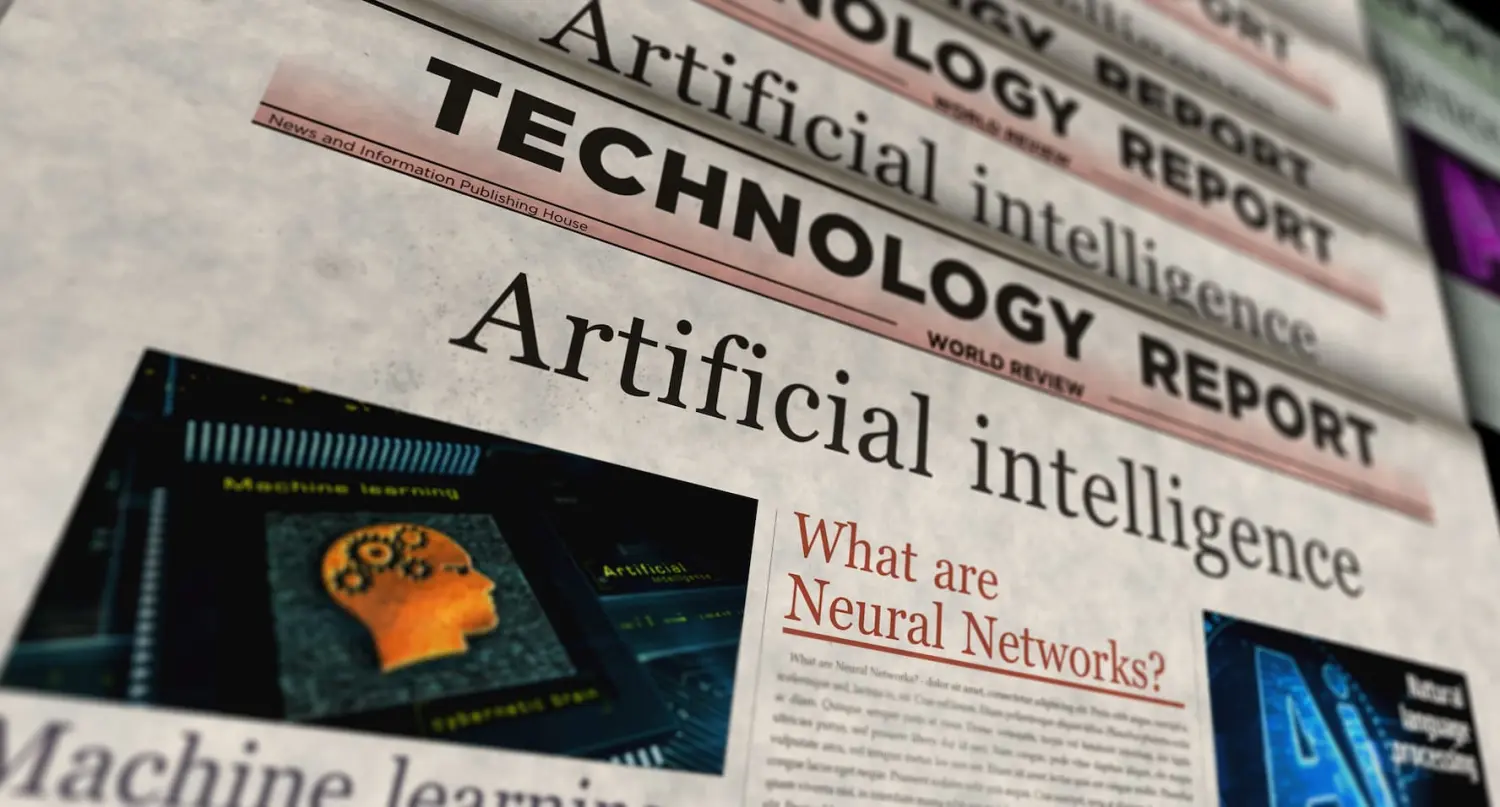Artificial intelligence has started to influence almost every industry, and content creation is no exception. News platforms are turning to algorithms and machine learning systems to produce articles, curate headlines, and deliver updates faster than ever before.
But what does this shift mean for the way we consume news? Let’s explore how AI is shaping the stories you encounter daily.
Key Points:
- Algorithms create news content in real-time.
- Human journalists still guide complex stories.
- Tools like AI detectors are important for identifying machine-generated text.
- Personalization of news has increased with artificial intelligence.
- Ethical challenges arise when relying on automated content.
- Fact-checking remains vital in the era of AI.
- Human creativity in journalism is irreplaceable.
- Artificial intelligence excels at crunching data-driven reports.
How Artificial Intelligence Has Changed Content Creation
Artificial intelligence now plays a significant role in content creation, particularly in news production. Many news agencies rely on algorithms to report sports scores, stock market summaries, or weather updates. This approach saves time and ensures accuracy for repetitive tasks.
For instance, Reuters and the Associated Press use artificial intelligence tools to generate stories based on financial data. The speed of artificial intelligence enables newsrooms to cover more topics in less time. However, while artificial intelligence can generate simple news, human journalists are still required to tackle stories that need context, nuance, or investigative effort.
A recent study published in the Journal of Communication highlights that over 60% of media outlets have implemented artificial intelligence for tasks like headline creation and trend analysis. Artificial intelligence is evolving, but does that mean it’s ready to replace human ingenuity? Not entirely.

The Role of AI Detectors in Identifying Automated Content
One major concern with automated content is authenticity. How do we distinguish between human-written and machine-generated articles? Tools like the AI detector have stepped in to solve this problem. These detectors scan text and analyze patterns that suggest automation, helping readers identify when artificial intelligence has played a role.
While helpful, such tools aren’t foolproof. AI-generated text is becoming harder to spot as systems improve. According to experts, many readers may already have consumed machine-created news without realizing it. AI detectors serve as a useful safeguard, but the responsibility still lies with news outlets to maintain transparency.
How Personalization Shapes News Consumption
Artificial intelligence doesn’t just write articles; it decides what you read. Platforms like Google News and social media apps use machine learning to recommend stories tailored to your interests. On the surface, this seems convenient. Personalized content ensures that you stay updated on topics you care about.
However, there’s a downside. Personalization can create echo chambers, where you only encounter perspectives that reinforce your beliefs. This limits exposure to diverse opinions, which is critical in shaping informed views. Balancing relevance and variety is a challenge for developers of artificial intelligence-driven systems.
Ethical Concerns Around Artificial Intelligence in News
Automation introduces ethical challenges. Artificial intelligence lacks the judgment to verify sources or detect bias. This raises questions about reliability. Who ensures that automated content adheres to journalistic integrity? Without human oversight, errors can spread quickly.
Consider a scenario where artificial intelligence misinterprets data during breaking news. A misleading headline could go viral within minutes, creating widespread confusion. Studies show that readers often remember initial reports, even after corrections. The role of human editors remains crucial in preventing such mishaps.

Advantages of Artificial Intelligence in Content Creation
Despite concerns, artificial intelligence offers undeniable benefits:
- Efficiency ─ Algorithms process vast amounts of data almost instantly.
- Accuracy ─ Automated systems reduce human error in technical reports.
- Scalability ─ Artificial intelligence can create thousands of articles in minutes.
- Language translation ─ Multilingual artificial intelligence tools make news accessible globally.
For example, artificial intelligence-generated reports in sports allow news outlets to cover multiple games simultaneously. Automation makes information more widely available, particularly for niche audiences.
The Importance of Fact-Checking in Automated Content
Fact-checking plays a key role in maintaining credibility. Even as AI becomes more advanced, it cannot verify complex facts or interpret abstract ideas. Human oversight ensures accountability.
Organizations like FactCheck.org and PolitiFact rely on human expertise to analyze claims, but artificial intelligence tools support the process by identifying anomalies in text. Collaborative systems that combine AI and human input may be the future of accurate reporting.
How Artificial Intelligence Impacts Reader Trust
Reader trust is the foundation of journalism. The increasing use of artificial intelligence raises concerns about transparency. When audiences know that automated systems generate content, they may question its reliability. Trust depends on the ability to verify sources, provide accountability, and ensure ethical standards.
According to a study by the Reuters Institute, over 40% of readers expressed skepticism about automated news. This highlights the need for clear disclosure when artificial intelligence plays a role. News organizations must bridge the gap between innovation and accountability by maintaining open communication with their audiences.
Ultimately, building trust involves collaboration between artificial intelligence systems and human editors to ensure accuracy and reliability.

The Future of Artificial Intelligence and Journalism
Looking ahead, artificial intelligence will likely continue assisting journalists rather than replacing them. Human creativity, emotional insight, and critical thinking remain irreplaceable in storytelling. Automated systems excel in efficiency but fall short when it comes to crafting compelling narratives or uncovering deep truths.
Many believe that AI should complement journalism, not dominate it. Tools like AI detectors, machine learning algorithms, and automation in data-heavy fields will remain valuable. However, the human touch will always be essential for delivering meaningful stories.
Closing Thoughts
Artificial intelligence has reshaped the news landscape, offering both opportunities and challenges. Its efficiency in content creation and personalization enhances accessibility, but ethical concerns and the risk of bias demand caution. Tools like the AI detector provide a layer of transparency, but the responsibility ultimately lies with media outlets and readers to maintain integrity.
As AI evolves, readers must stay informed and question the source of their news. Are we consuming authentic, reliable information, or are we unknowingly relying on machines to narrate the world around us?
Related Posts:
- How Innovative Skincare Trends and Products are…
- The Psychology Behind Risk-Taking ─ Why Some People…
- Should You Take That Casino Bonus? Breaking Down the…
- Planning Your Everest Adventure – What You Need to…
- How a Personal Injury Lawyer Can Help You Get the…
- If You Want Success in America – You Need to Embrace…








